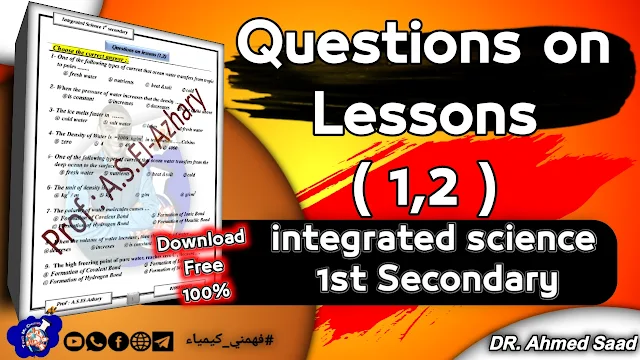Integrated Science: Exploring Lessons 1 and 2 for 1st Secondary Students
Introduction to Integrated Science
Integrated science is a fascinating subject because it combines multiple scientific disciplines to offer a comprehensive understanding of how scientific principles are interconnected. This approach helps students appreciate the interdependence of biology, chemistry, physics, and earth sciences, providing a holistic view of natural phenomena.
Lesson 1: Matter and Energy
In Lesson 1 of the 1st Secondary curriculum, students explore the fundamental concepts of matter and energy. They learn about the different states of matter (solid, liquid, gas) and the role of energy in causing changes between these states. This lesson emphasizes energy transformations and the conservation of matter, which are foundational concepts in science. For example, understanding the melting of ice requires knowledge of thermal energy and state changes.
Lesson 2: Chemical Reactions
Lesson 2 delves into the principles of chemical reactions. Students learn about reactants and products, the law of conservation of mass, and various types of chemical reactions such as synthesis, decomposition, and combustion. This lesson highlights the practical applications of chemistry in everyday life, from cooking to the functioning of batteries.
Importance of Integrated Science
The 1st Secondary Questions on these lessons test students' understanding and application of scientific concepts. These questions involve problem-solving and critical thinking, asking students to explain processes, predict outcomes, and demonstrate their grasp of scientific principles. By integrating different scientific disciplines, these lessons provide a holistic education that prepares students for advanced studies and real-world problem-solving.
حمل مذكرة أسئلة العلوم المتكاملة لغات | Questions on aquatic ecosystem lesson 1 integrated Science
Integrated Science: Exploring Lessons 1 and 2 for 1st Secondary Students
Conclusion
Integrated science is essential in fostering a deeper understanding of the natural world. By combining various scientific disciplines, it helps students connect and apply scientific facts to understand the world better. The lessons and questions in the 1st Secondary curriculum build a strong foundation in basic scientific principles, preparing students for further studies and practical applications in science.




